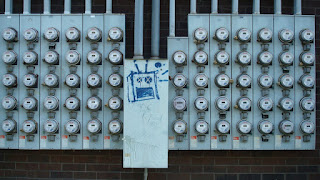2. Knowing what trends people use to identify what kind of a book you're buying, for example, is it wise to buck the trend financially? For instance, what if you wrote a children's book that didn't LOOK like a children's book. Would you even be published?
Our adaptation to common mediums of academic text compared to others, be it fiction, comic, or children's allows us to categorize the media we are approaching. This grouping allows for a certain frame of mind to be engaged prior to reading. In the instance of the children's book, I do not believe it would be published, but this may be an error on the point of the publisher. This expansion on the typical medium could confuse children at first, but could expand the child's mind and show them creativity in a simple sense. This could foster artistic ability and 'out of the box' thinking that may lead to innovation later in life. Still, in a culture resistent to change (unless its a campaign slogan) it is unlikely that parents , child shriks, and more importantly, publishers will not be accepting of this theory.









